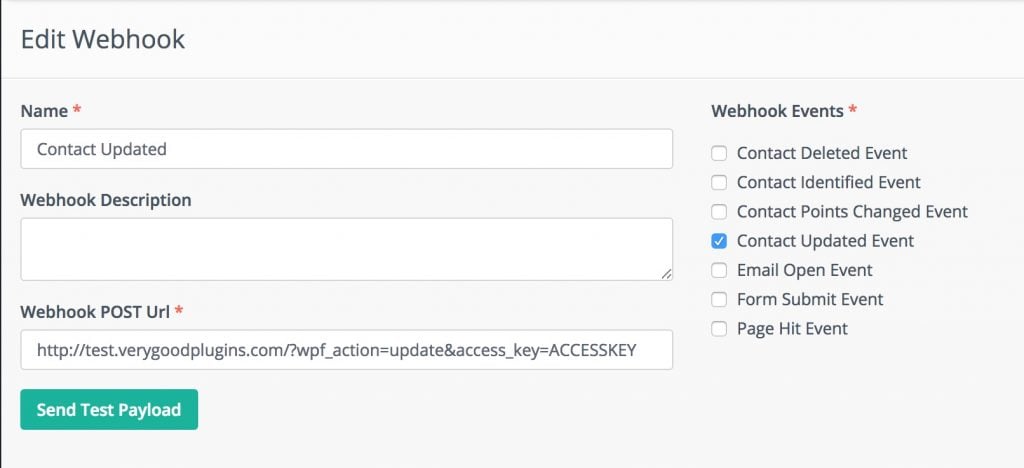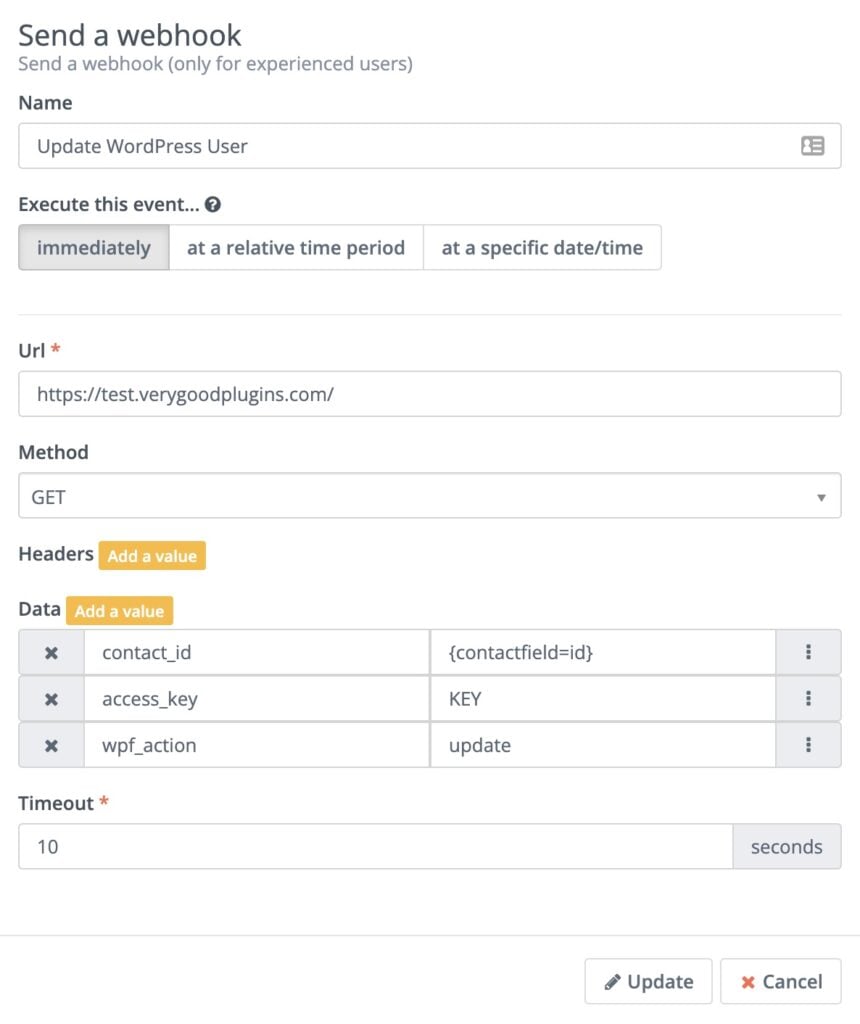#Overview
You can use Webhooks in Mautic to automatically send updates back to your WordPress site when a contact’s profile has been updated. You can also automatically generate new WordPress user accounts for Mautic contacts.
There are two ways to set up webhooks with Mautic. Either globally, or part of a campaign:
#Global webhooks
Global webhooks apply to all contacts in Mautic. For example you can send data back to WordPress whenever any contact is updated.
Navigate to the webhook settings (accessible via the gear the the top right of your app) and create a new webhook.
Depending on the action you’re trying to perform, there are multiple ways to format the webhook URL. Those are explained further down this page.
#Webhooks in a campaign
You can also add a webhook node to a campaign, so that it only runs on contacts in that campaign. For example this could be used to create new WordPress users only when a contact is tagged when a specific tag.
- In the URL field, enter the URL to your site
- For the method, select GET
- Under data, add three new rows:
- Name
contact_id, and the value is{contactfield=id} - Name
access_key, the value is the access key from the bottom of the WP Fusion general settings tab - Name
wpf_action, which can be eitheradd,update, orupdate_tags. See below for more info.
- Name
When the contact gets to this point in the campaign, Mautic will ping your webhook URL and merge in the ID of the current contact, so that WP Fusion knows which contact to load the data for.
#Webhook methods
#To update a user’s tags
To update an existing WordPress user’s tags from the contact record, set wpf_action to update_tags.
#To update a user’s tags and meta data
To update a user’s tags and pull any new meta data from Mautic for that contact, set wpf_action to update.
#To create a new user
To create a new user, set wpf_action to add.
You can also specify additional parameters in user creation. For example, to send the user a welcome email containing a link to log in on your site, add an additional row to the data, with name send_notification and value true
You can also specify a specific user role to be assigned to the new user. For example, to set the new user to the “customer” role, use name role and value customer.
Note that you have to have registered a “customer” role on your site for this to work. By default users will be assigned the role of “subscriber”.
The add method will update a user if an existing user already exists. It will not create a duplicate user.
user_login and user_pass on your website, the new users will be given the usernames and passwords stored in their Mautic contact record.#User passwords
New user accounts will be created with an automatically generated password. If you’d like to use this password in your email marketing, you can send the password back to Mautic after it has been generated.
In the Webhooks section of the General settings tab, check the box for Return Password, and select a field in Mautic where the password should be stored.
After a new user is created, their automatically generated password will now be saved back to their contact record, and you can use a merge field to include it in an email. The username will be the contact’s email address.


